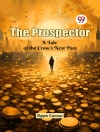In Ann S. Stephens’ captivating novel, ‘The Gold Brick, ‘ readers are immersed in a vivid tapestry of 19th-century American life, intertwining themes of ambition, morality, and societal expectations. The narrative unfolds through the experiences of a range of characters whose lives revolve around the titular gold brick, a symbol of both wealth and deception. The author employs a rich, descriptive prose style that reflects the pre-Civil War era’s literary conventions, creating a social commentary that examines the often-hidden moral costs of the pursuit of wealth. Stephens’ work is a notable contribution to the genre of domestic fiction, characterized by its focus on the lives of women and the moral implications of their pursuits in a rapidly modernizing society. Ann S. Stephens, an influential figure in American literature, was a pioneering woman writer whose experiences as a journalist and editor informed her literary voice. Living in a time when women’s roles were largely confined to the domestic sphere, her work often challenged societal norms and provided a platform for women’s agency. The depth of her characters and their struggles reflect both her personal insights and the broader societal issues of her time, marking her as a seminal figure in American literary history. ‘The Gold Brick’ is highly recommended for readers interested in the complex intersections of gender, morality, and the American Dream. Stephens’ ability to weave engaging narratives with profound thematic depth makes this novel a significant work for those exploring 19th-century American literature or the evolution of women’s roles in fiction. Readers will find themselves reflecting on the moral dilemmas faced by the characters long after the final page is turned.
Mengenai Pengarang
Ann Sophia Stephens (1810–1886), an American novelist and magazine editor, was a prolific writer who played a significant role in the early development of American popular fiction. Born in Derby, Connecticut, she began her literary career with poetry before moving on to novels. Stephens was celebrated for her contributions to the emerging genre of the dime novel, and her narratives often featured themes of romance, domestic life, and adventure, catering to the tastes of a broad readership during the mid-19th century.
Her work ‘The Gold Brick’: or, The Phantoms of the Glen, published in 1873, is among her notable contributions to the literary world. This novel, like many of her works, captures the spirit of popular fiction of the time, resonating with readers through its blend of suspense and moral lessons. Stephens was also the author of several other noteworthy titles such as ‘Fashion and Famine’ (1854) and ‘Malaeska: The Indian Wife of the White Hunter’ (1860), which was one of the first dime novels ever published. Her literary style, often characterized by melodrama and didacticism, mirrored the cultural and social sensibilities of her era and cemented her place as a significant figure in the development of American dime novels and sentimental literature (Okker, 2003).












